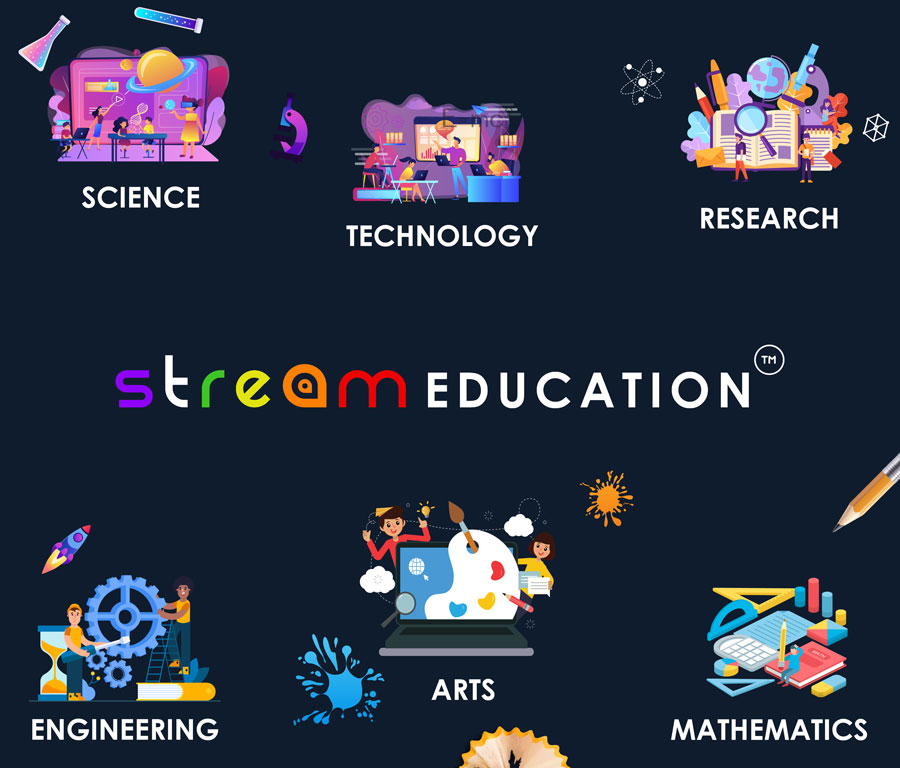
Advantages of transitioning from a traditional STEM-based education to a more comprehensive STREAM-based approach, and how can this shift better prepare students for the demands of the modern workforce?
The key difference between STEM and STREAM education™ lies in their scope and approach. STEM education focuses on Science, Technology, Engineering, and Mathematics, aiming to develop critical thinking, problem-solving, and analytical skills for careers in technical and scientific fields. It emphasizes practical applications of scientific principles and technology.
STREAM education™, on the other hand, expands on STEM by adding Research and Arts, making it Science, Technology, Research, Engineering, Arts, and Mathematics. This addition emphasizes literacy and communication skills alongside creativity and critical thinking. STREAM aims for a more comprehensive, whole-child approach by integrating humanities and arts with STEM subjects.
The practical differences between STEM and STREAM education™ can be summarized as follows:
Subjects Included: STEM includes Science, Technology, Engineering, and Math, while STREAM includes Science, Technology, Research, Engineering, Arts, and Math.
Focus: STEM focuses on technical skills, critical thinking, and problem-solving in STEM fields, while STREAM focuses on broader skills including literacy, creativity, communication, and critical thinking.
Educational Approach: STEM is interdisciplinary within STEM disciplines, while STREAM is interdisciplinary including humanities and arts, promoting whole-child development.
Learning Outcomes: STEM prepares students for STEM careers and technical problem-solving, while STREAM prepares students for STEM careers plus enhanced creativity, innovation, and life skills.
Real-World Application: STEM emphasizes practical scientific and technological applications, while STREAM integrates humanistic and artistic perspectives for well-rounded solutions.
In essence, STREAM education™ builds on STEM by adding literacy and arts to foster a more holistic educational experience that prepares students not only for technical challenges but also for effective communication and creative problem-solving in real-world contexts.




